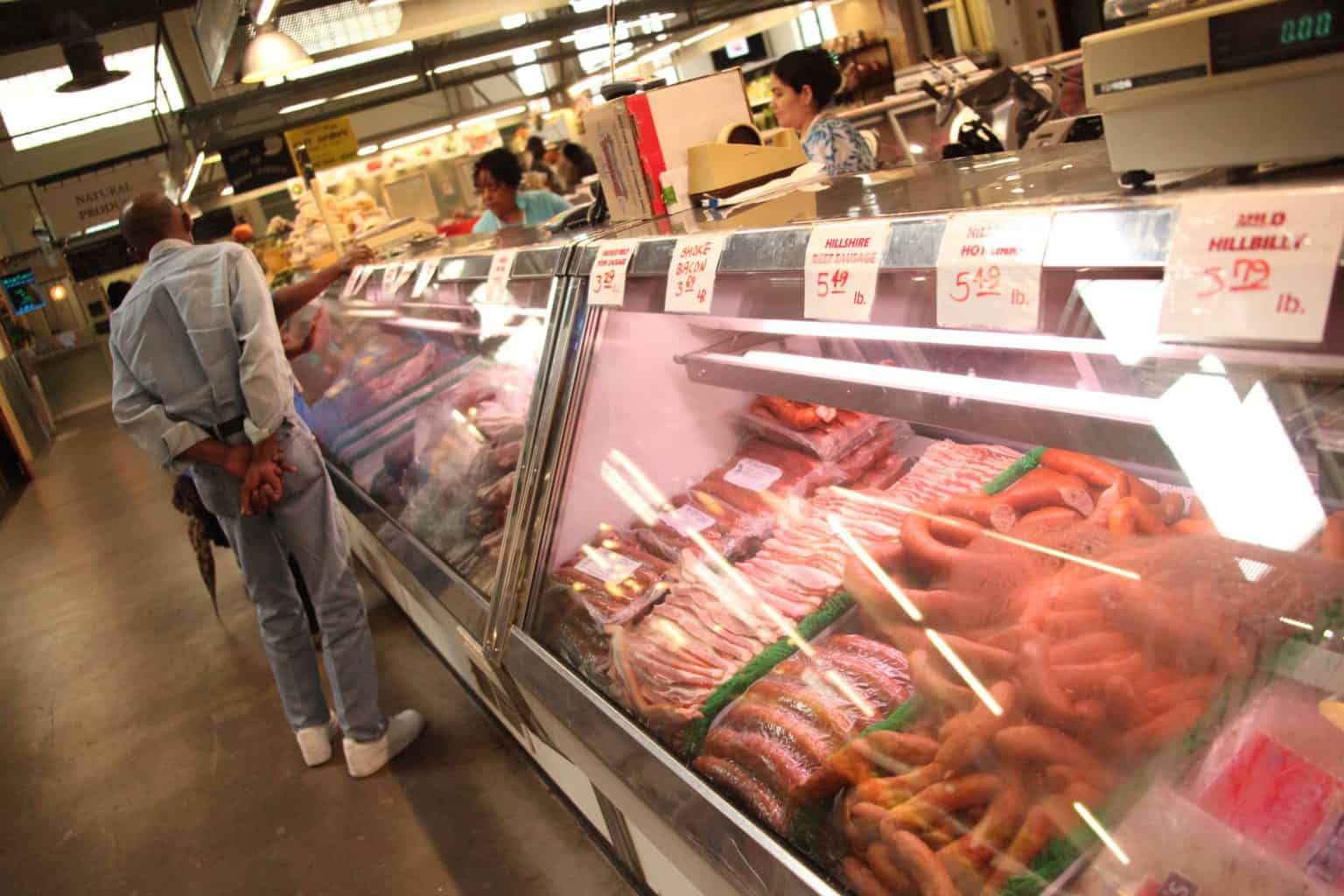Why Locals Love Bagley Farms Meat Market Edwardsville IL for Their Meat Shopping
Why Locals Love Bagley Farms Meat Market Edwardsville IL for Their Meat Shopping
Blog Article
Discover the Art of the Butcher's Cut in a Modern Meat Market
In the ever-evolving landscape of modern meat markets, the butcher's cut has transcended its traditional roots, merging old-time craftsmanship with contemporary practices. bagley farms meat market edwardsville il. Today's butchers are not merely processors of meat; they are knowledgeable artisans that highlight sustainability and honest sourcing. Their experience in picking and preparing cuts tailored to certain cooking needs supplies an unparalleled eating experience. Yet, what genuinely sets the modern butcher apart is their capacity to create a deeper connection between customers and the beginnings of their meat. Just how do these masters balance practice with technology, and what effects does this have for the future of meat usage?
Evolution of Butchery Methods

The mid-20th century saw butchery strategies additionally refined by scientific understandings into muscular tissue biology and meat aging, improving both tenderness and preference. Advancements like vacuum product packaging and refrigeration prolonged item shelf-life, permitting butchers to diversify offerings and enhance high quality control. This duration additionally noted the rise of specific equipment, such as band saws and meat slicers, which raised accuracy and efficiency in meat handling.
Digital systems currently aid in monitoring pet provenance and optimizing cuts to meet particular client preferences. Furthermore, a resurgence in artisanal butchery has emerged, mixing conventional abilities with modern-day knowledge to provide to customers looking for moral and lasting meat choices.

Recognizing Meat Cuts

Recognizing the ins and outs of meat cuts is important for both butchers and customers looking for quality and worth. For butchers, precise cuts reflect skill and respect for the craft, ensuring very little waste and optimum yield.
The key categories of meat cuts consist of primal, sub-primal, and retail cuts. Butchers then damage these down further into sub-primal cuts, prior to ultimately producing retail cuts offered to customers, like ribeye or tenderloin.
Comprehending muscle composition is critical; muscles utilized extra frequently by the animal have a tendency to be harder and are best suited for sluggish food preparation approaches, while less-used muscles, like those found in the loin, are a lot more tender and perfect for cooking or roasting. Familiarity with these distinctions empowers consumers to make educated selections, boosting their go now cooking endeavors.
Selecting Quality Meat
Picking the best meat involves even more than simply choosing a visually enticing piece from the screen. The art of selecting top quality meat needs a critical eye and understanding of particular characteristics that indicate quality and excellence.
Second of all, consider the marbling, which describes the white flecks of fat within the muscular tissue. Appropriate marbling is an essential indicator of tenderness and taste, as it melts throughout cooking, boosting the meat's juiciness. Remember, greater marbling often associates with premium top quality cuts, such as USDA Prime.
Texture is one more critical aspect; meat should feel strong to the touch, not slimy or overly soft. Furthermore, bear in mind the fragrance. Fresh meat needs to have a clean, neutral odor, without any type of sour or repulsive smells.
Coupling Cuts With Cooking Techniques
Successfully combining cuts of meat with the proper food preparation approaches is essential for achieving optimal taste and texture. These techniques enhance the meat's natural flavors and make sure a juicy finish.
Alternatively, harder cuts like brisket and chuck roast are abundant in collagen, which breaks down into gelatin when cooked gradually. These cuts are ideal for braising or slow-moving roasting, permitting the meat to soften over time and develop deep, intricate tastes. Cuts such as brief ribs and pork shoulder get on well with slow-cooking techniques, where extended cooking times change their durable textures into delicious meals.
Lamb shanks and oxtail, which need long term cooking to tenderize, are excellent prospects for stewing or slow-moving simmering. These approaches coax out abundant, passionate tastes while preserving moisture. By recognizing the special qualities of each cut, chefs and home chefs alike can elevate their culinary creations, ensuring each meal is both get more satisfying and remarkable.
The Butcher's Function Today
Navigating the advancing landscape of the modern meat market, the butcher's duty today extends beyond simple prep work of cuts. Contemporary butchers are culinary artisans, teachers, and supporters for sustainable methods.
Along with crafting accurate cuts, butchers now engage straight with clients, supplying cooking recommendations and tailoring selections to suit private needs and preferences. Their know-how in meat aging, marbling, and taste profiles empowers consumers to make educated choices, boosting their culinary experiences. This customized service exemplifies the butcher's progressing duty as a relied on expert in the kitchen.
Furthermore, butchers are essential in minimizing waste, utilizing whole pets look at this website to develop varied items such as sausages and stocks - bagley farms meat market edwardsville il. This comprehensive method not only appreciates the animal however additionally lines up with contemporary sustainability goals. In this means, the modern-day butcher personifies both practice and technology, adjusting to an ever-changing market while maintaining the virtuosity and honesty of their craft

Final Thought
The contemporary butcher's craft delicately weaves standard methods with modern technologies, highlighting sustainable methods and ethical sourcing. Proficiency in comprehending diverse meat cuts and top quality indicators encourages butchers to offer informed suggestions, aligning certain cuts with optimum cooking approaches. This know-how not only raises culinary experiences however also enhances the link between customers and the beginnings of their food. By honoring historical techniques while embracing modern needs, the butcher's function continues to be important in today's innovative meat market.
Report this page